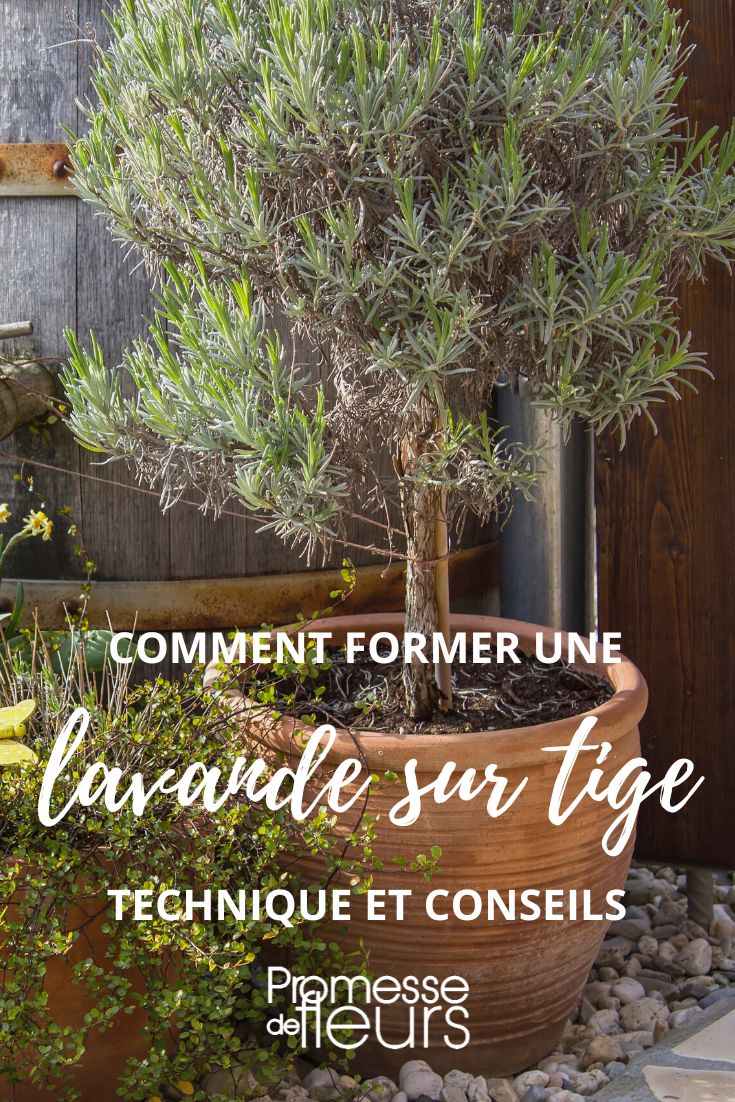Unlike bushy lavenders, lavenders trained as standards have a more sophisticated form because they undergo atypical pruning, giving them appearance of a small, very ornamental tree. Silhouette of standards in general and lavenders in particular is very elegant and makes them perfect for pretty pots, for a romantic, timeless look. Lavender lovers, discover our instructions to train lavender as a standard: you will need a good pruning shear and a little patience!
When to train lavender as a standard?
Begin training lavender as a standard in autumn or spring, on soft wood. Afterwards removal of side shoots will be carried out as growth progresses.
Maintenance pruning should be done after flowering as for other lavenders.
How to train lavender as a standard?
Required equipment
To train your Lavender, equip yourself with:
- a young plant of lavender (Lavandula stoechas, lavandula angustifolia, etc.), not too ramified. It can come from a cutting you have taken or be a young plant purchased
- a sharp pruning shear
- a stake and soft ties
- a pot, preferably terracotta
- good garden soil
- coarse sand
- clay balls
- a trowel or transplanting spade

Principle is to remove lateral leaves and branches of lavender to keep only one branch, forming stem or "trunk" as it grows. Over time this stem will lignify (form wood) and will be able to carry top ball of branches.
- If your lavender is in a small container (bucket or small pot), repot it into a larger pot with mix of 2/3 good, non-clay garden soil and 1/3 coarse sand. Put layer of a few centimetres of clay balls in bottom to ensure drainage and water
- Start by removing all lateral leaves leaving only a small "tuft" of leaves at top
- As lavender grows, remove side shoots, always keeping a few leaves at top. This operation can take several months and requires some patience
- When main stem starts to gain some height (about 10 cm), stake it with stake and soft ties to keep upright. Remember to loosen ties as it grows to avoid wounding the "trunk"
- When lavender reaches desired height (between 10 and 30 cm maximum) allow top ball of branches to develop, shaping it into a nice rounded form.
- Remember to water regularly, allowing substrate to dry out between watering
- Carry out pruning of lavender ball every year just after flowering, using shear, to keep nice rounded shape
Precautions
Remember to always clean pruning tools with soapy water then disinfect with alcohol before and after use to avoid transmission of diseases from one plant to another. Sharpen, dry and oil tools after cleaning to prevent rust and seizing: tools will stay like new for years
To go further:
- Discover our many varieties of lavenders
- Learn everything you need to know about lavender in our complete guide: "Lavender: planting, growing, pruning"
































Comments